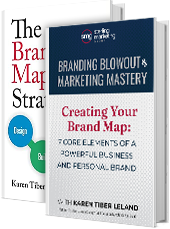Summary:
The article discusses the growing importance of eBooks in small-business branding despite confusion among owners about their role. It highlights common questions regarding eBooks and provides insights on their benefits, writing process, and promotion strategies. eBooks serve as powerful marketing tools, offering opportunities to showcase expertise and engage potential customers through various channels like websites, newsletters, and blogs. While creating a quality eBook demands effort, it serves as a long-term asset in strengthening a business’s brand identity and reach.

In the world of small business marketing, it sometimes seems like there is a never-ending tension between the “what’s hot now” social media to do and the actual way to execute for maximum business benefit. Consider for example all the small businesses that have a Twitter account because they know they “should” but are really not using it effectively. The current darlings of small business branding — eBooks — are no exception.
Despite their meteoric rise in popularity — American publishers reported that in February of 2011, eBooks ranked as the #1 format among all categories of trade publishing — I still find that many small business owners are confused about the part eBooks play in their overall marketing plan. Here are the four most common questions I get asked about using eBooks to build a small business’s brand.
1. What exactly is an eBook?
In short, an eBook (electronic book) is an electronic document that can contain text, images, audio and video. They can be viewed on a personal computer, smartphone and eBook reader, such as a Kindle, and are sold through Amazon, Barnes & Noble and dozens of other outlets.
One important distinction to note, however, is that only eBooks that are created as PDF documents and downloaded as such retain their formatting and graphics. eBooks that are not downloaded as PDFs fall into the category of e-publishing, and when viewed on a Kindle, iPad or other device, they are simply a straight translation of the text only. Currently the Kindle and other such devices can only support the text from these documents, not graphics.
Most of my small business clients find that because they are creating eBooks primarily for branding and marketing purposes, they use the PDF format — being able to include graphics, format, audio, video, etc is a distinct advantage.
2. How could an eBook help my small business become better known?
eBooks can be the perfect calling card for potential customers. Offering an eBook free on your website in exchange for a prospect’s email, providing a link to a free downloadable eBook via your newsletter, or even having a link to your eBook in your email signature line provides a much greater opportunity to show your client your knowledge, expertise and point of view.
3. What’s the basic process for writing a small business eBook?
Step #1 Choose a topic: Brainstorm ideas that that use your expertise, knowledge base or specific information and/or research. Consider smaller slices of bigger topics for eBooks. Books that can fit into the “how to” topic area are some of the most popular.
Step #2 Create Your eBook Outline: Decide what five to ten basic topics you are going to address in your eBook, and then outline the three main points you are going to make under each of those topics.
Step #3 Begin Writing Your eBook: Oddly enough, the easiest part of eBook publishing is getting the finished product up and running for distribution. Many can be uploaded with just a click of a few buttons. But where most entrepreneurs face a challenge is in finding the time, or having the writing chops, to craft the eBook in the first place. I get weekly calls from small business owners asking me to ghostwrite their eBooks because, although they have great content and ideas, they don’t have the writing skills.
Even if that’s the case, it’s no excuse, since there are scads of eBook-savvy small businesses whose sole purpose is to ghostwrite, edit, design and publish your eBook.
Step #4 Edit and design your eBook: A few things to keep in mind:
Unless you were an English major, hire a proofreader to go through your manuscript to check spelling, grammar and punctuation.
Unless you were a graphic design major, hire a designer to create the layout, cover and formatting of your book.
Unless you are an illustrator, hire a graphic artist to add pictures or drawings to your eBook.
Consider embedding video in the eBook.
4. How do I get word out to my customers about my eBook?
Like any other marketing effort, creating something stellar is just the first step. Once your eBook is ready, your next job is to tell everyone. Some of the best practices include: writing about your new small business eBook on your blog, providing excerpts of your eBook to other blogs with a link back to the full eBook download, issuing press releases about your eBook, promoting your eBook in your newsletter, and offering your eBook as a follow-up to any webinars or live presentations.
If after reading this you are feeling like writing an eBook sounds like a whole lot of work, you’re right. A professional, well-written, content-rich eBook requires a fair amount of effort and energy. But think of it like this: As soon as that eBook baby is born, it’s done and out in the world, helping to build your small business brand.
Have you used an eBook to build your business brand? What results did it produce? We would love to hear about your experience.
